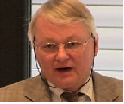Day 1 :
Keynote Forum
Joachim Wink
Helmholtz Centre for Infection Research,Germany
Keynote: The upcoming role of actinomycetes in the strain collection of the helmholtz centre for infection
Time : 10:00-10:45

Biography:
Abstract:
Keynote Forum
Patrick Fickers
University of Liege, Belgium
Keynote: Pichia process optimization by methanol/sorbitol co-feeding
Time : 10:45-11:30

Biography:
Abstract:
- Biofilms Formation | Microbial Biotechnology | Microbial Ecology | Water Microbiology | Pharmaceutical Microbiology | Behavioural Microbiology
Location: Salon II & III

Chair
Joachim Wink
Helmholtz Centre for Infection Research (HZI),Germany

Co-Chair
Patrick Fickers
University of Liège - Gembloux Agro-Bio Tech, Belgium
Session Introduction
Reshetilov Anatoly
Russian Academy of Sciences, Moscow
Title: Microbial biosensors for environmental applications and the potential of microbial fuel cells

Biography:
Abstract:
Ilknur Tuncer
Dokuz Eylul University, Turkey
Title: Bacterial diversity and biogeochemical analysis of sediments in Eastern Mediterranean Sea

Biography:
Abstract:
Eun-Young Jung
Busan Water Quality Institute, South Korea
Title: Detection of various parasitic protozoa from raw water and water supplies: A PCR study

Biography:
Eun-Young Jung has completed his PhD in Microbiology. He has been working in Busan Water Quality Institute in South Korea since 15 years
Abstract:
Mahek Merchant
University of Westminster, UK
Title: Culture matters: Do spores talk with each other?

Biography:
Abstract:
Astrid Helga Paulitsch-Fuchs
Wetsus Centre of Excellence for Sustainable Water Technology, Netherlands
Title: Impedance analyses of biofilm formation of two Staphylococcus aureus strains under CuCl2 or CuSO4 influence

Biography:
Abstract:
Rasih Felek
Akdeniz University, Turkey
Title: Investigation of Staphylococcus aureus enterotoxin in the meals of some hotels in Antalya, Turkey

Biography:
Abstract:

Biography:
Abstract:
Kalyan Koganti
Help Hospitals, India
Title: Alarming multidrug resistance in community acquired urinary tract infections

Biography:
Abstract:
Vikrant Negi
Dr. Sampurnanand Medical College, India
Title: Factors associated with Staphylococcus aureus nasal carriage among medical students: Hospital-drug resistance biofilm

Biography:
Abstract:
- Workshop:"Applications of different agro-industrial wastes in petroleum biotechnology"
Location: Salon II & III

Chair
Nour Shafik Emam El-Gendy
Egyptian Petroleum Research Institute, Egypt
